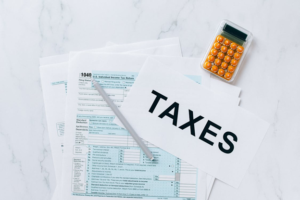You’ve started building up an emergency fund. That’s great — but are you doing it the right way? You could be making some simple mistakes without even realizing it and sabotaging your savings. Find out exactly what some of those simple mistakes are.
Making Irregular Contributions
You contribute to your emergency fund once in a while, whenever the mood strikes you. If you notice that you have some spare money sitting in your checking account at the end of the month, you’ll sometimes transfer it into your savings account.
This is a mistake. You should always be consistent with your emergency fund contributions. This is how you can make sure that it’s continuing to grow into a reliable safety net. When you’re inconsistent, you can’t be sure that you’ll have a considerable amount of savings to rely on when disaster strikes. You might not have enough.
So, How Do You Fix This Problem?
Make your emergency fund contributions a priority. First, take a look at your personal budget and see how much you can afford to put into your emergency fund every single month. Once you’ve figured that out, add “emergency savings” as a new budgeting category. It’s now an essential expense that you can’t ignore, like your groceries or your phone bill.
Then, you can automate those budgeted contributions through your online banking. Set up automatic deposits from your checking account to your savings account. That way, the emergency savings will go into the designated account on a regular basis. You won’t forget to add money into the fund and let it sit stagnant for months on end. It will always be growing.
Making Unnecessary Withdrawals
Have you ever used your emergency fund for a non-emergency? Like, maybe you forgot to save up for your bi-annual dentist appointment and you used the savings sitting in your emergency fund to cover the treatment costs. Or maybe you decided you really wanted to go on a shopping spree for a new wardrobe, and then used your emergency savings to cover the huge bill.
It’s never a good idea to make withdrawals from your emergency fund for non-emergencies. It undermines the purpose of the entire savings account and leaves you with less for actual emergencies. You might find that you don’t have enough left inside the account when you really need it.
Another problem with unnecessary withdrawals is that it can lead to extra banking fees. The savings account that you’re using to store your emergency fund will have a limit on how many withdrawals or transfers you can make per month. If you cross that limit, you will be charged an excessive withdrawal fee. The fee is small (usually $15 or less), but it can add up with every charge. It’s best to avoid it.
Saving without a Backup Plan
So, you’ve started building up an emergency fund. It’s new, so it’s still on the small side. You have a few hundred dollars in there. It’s enough to cover a very small emergency expense, but nothing more. That’s the only safety net you have. If you get hit with an expense that’s more than a few hundred dollars, you’ll have no way to cover it.
When your emergency fund doesn’t have a substantial amount of savings inside of it, you can’t rely on it to be your only safety net. You’ll need to have a backup plan in case you get hit with an expense that’s bigger than your savings total. This backup plan could be a credit card that has plenty of credit available. You can charge the expense to your credit card and then pay down the balance later on.
Another option is a line of credit. You might have a personal line of credit or a home equity line of credit (HELOC). In the case of an emergency, you could request funds from the line of credit and use them to cover your urgent expense in a short amount of time. Again, like a credit card, this will only be possible if you have plenty of available credit in your account.
Without these backup plans, you may want to consider applying for a personal loan online. With an approved online loan, you could use temporary funds to pay off the expense quickly. If this seems like a potential solution for you, look up what you need to know about online loans. The information could come in handy in an emergency.
You don’t want to make big mistakes when you’re building a safety net. Follow these tips to make your emergency fund the right way!





Be First to Comment